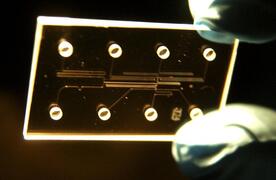 Example of a microfluidic chip. Image from NASA. Example of a microfluidic chip. Image from NASA. Continuing its track record of innovation, LMT is proud to announce that it has been selected for a 2017 Phase I SBIR award. In this Small Business Innovative Research (SBIR) effort, Leiden Measurement Technology LLC (LMT) will design and build the Wholly-integrated Optofluidic Laser-induced Fluorescence Electrophoresis Chip (WOLFEChip), a microchip capillary electrophoresis (MCE) system using a miniaturized optofluidic approach for packaging all optical elements necessary for laser-induced fluorescence (LIF) on-chip. 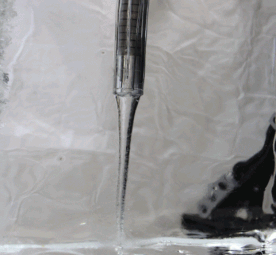 Laboratory prototype of a direct laser penetrator making its way through ice. Image from NASA Share the Science website. Laboratory prototype of a direct laser penetrator making its way through ice. Image from NASA Share the Science website. Leiden Measurement Technology is partnering with Stone Aerospace on its new ARCHIMEDES (A Really Cool High Impact Method for Exploring Down into Europan Subsurface) project, an entirely novel ice-penetrating technology that uses laser light carried by an optical fiber tether. Sponsored by NASA and led by Stone Aerospace, the ARCHIMEDES project aims to provide sub-surface access for a Europa lander and to co-transport fiber instruments for the detection of biomarkers in the ice. 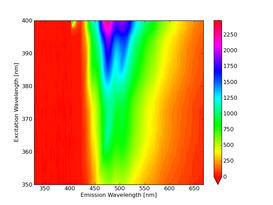 Excitation-emission plot for the PAH perylene in water ice. Excitation-emission plot for the PAH perylene in water ice. Following a successful Phase I contract, LMT is proud to announce that it has been awarded a 2017 NASA SBIR Phase II contract for its work on the Fluorescence Lifetime Excitation Emission Spectrometer (FLEXEMS) instrument, a novel device for detecting and identifying trace organics in-situ. 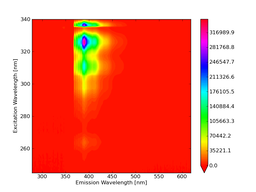 Excitation-emission plot of the PAH pyrene in water ice. Excitation-emission plot of the PAH pyrene in water ice. LMT is proud to have been awarded another NASA SBIR Phase 1 contract, this time for designing and building a Fluorescence Lifetime Excitation Emission Spectrometer (FLEXEMS) instrument, a novel device for the detection and identification of trace organics in-situ. 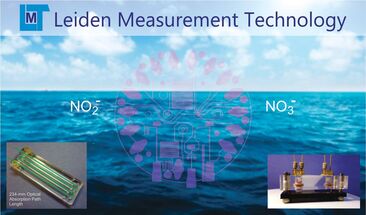 Leiden Measurement Technology has been awarded a Phase II SBIR contract to develop a portable microfluidic instrument capable of measuring inorganic ions in potable water supplies, thermal control system cooling water, and even human waste water. 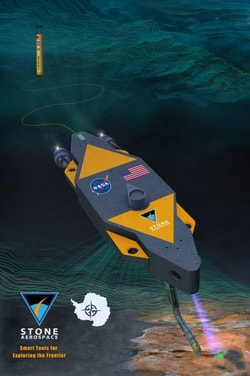 Image courtesy Stone Aerospace. Image courtesy Stone Aerospace. Leiden Measurement Technology is proud to announce that it has been chosen to be part of the NASA SPINDLE project led by Stone Aerospace. SPINDLE will develop a new class of exploratory technology suitable for penetrating the icy crusts of Europa and Enceladus and exploring the oceans beneath. For the first phase of SPINDLE, LMT has been chosen to help define the means of finding potential habitats and detecting life in extraterrestrial settings all while preventing forward contamination of pristine environments. This will include addressing the fundamental science of what defines life, how to find exotic life, and what instruments should be used to do so. 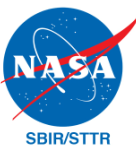 LMT is proud to announce that it has been selected for two Phase I SBIR awards, announced on April 30, 2015. One of the projects will be developing novel optical cells for highly-sensitive on-chip microfluidic analysis of nitrite and nitrate. Additionally, new instrumentation techniques for mixing short-lived reagents in-situ will be developed, enabling long-duration deployment of microfluidic systems. For the second project, LMT will be developing a novel on-line, compact, system to autonomously and continuously detect inorganic ions in a water stream. 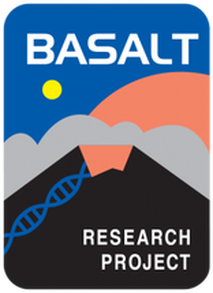 The goal of BASALT is to prepare for the human exploration of Mars by studying how humans and robots can perform science explorations in volcanic terrains. Key to this project is the high-fidelity scientific exploration and characterization of the physical and biological aspects of lava flows in Hawaii and Idaho and how humans can use a variety of instruments to characterize them and their habitability. To achieve all of this, a large team has been assembled that includes scientists, operations and instrumentation experts, and active astronauts from NASA Goddard Space Flight Center, NASA Kennedy Space Center, NASA Ames Research Center, SETI Institute, BAER Institute, Wyle Engineering, Massachusetts Institute of Technology (MIT), Purdue University, Leiden Measurement Technology, Idaho State University (ISU), Cornell University, and University of Hawaii at Hilo/PISCES. LMT is bringing its expertise in instrumentation to the project and its personnel will oversee all aspects of advanced instrumentation being used for this project. |
